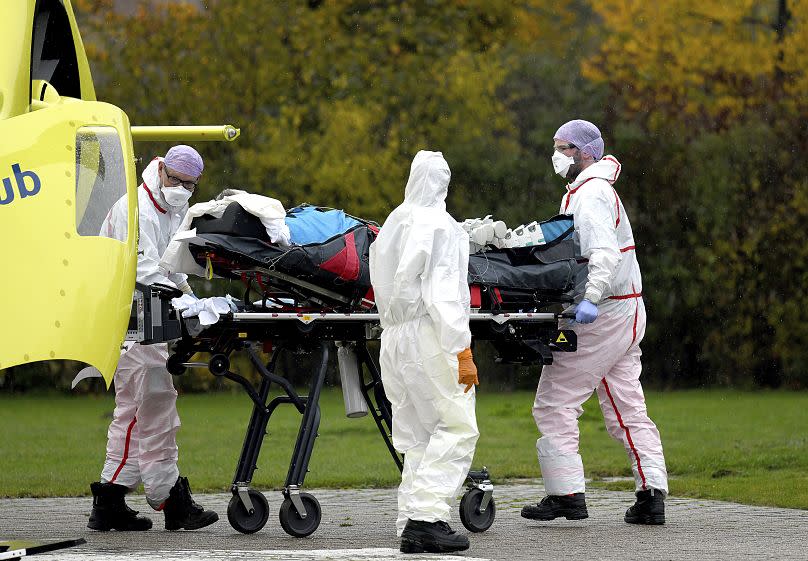COVID erased decade of health progress as global life expectancy dips by 2 years

Life expectancy dropped by nearly two years during the COVID-19 pandemic, eliminating a decade of progress, the World Health Organization (WHO) said on Friday.
The annual Health Statistics Report found that between 2019 and 2021, global life expectancy dropped 1.8 years to 71.4 years, which was the same level as in 2012.
A previous study published in the Lancet in March estimated that global life expectancy had fallen by some 1.6 years during the pandemic.
The health agency said the decrease showed that health gains are “fragile” with COVID-19 erasing years of progress.
“This is the world's report card on health, and the bottom line is that we are failing,” Dr Samira Asma, the WHO’s assistant director-general for data, analytics and delivery for impact, said at a press conference.
“Despite encouraging progress in some countries and for some conditions, overall life expectancy has fallen, and shockingly, the world is not on track to achieve even a single one of 32 health-related sustainable development goals with a global target,” she added.
These goals, which were adopted by the UN in 2015, include reducing global maternal mortality to fewer than 70 per 100,000 live births, ending preventable deaths of children under 5, and ending the epidemics of AIDS, tuberculosis, malaria, and other diseases.
While there’s been progress on maternal mortality since 2000, for instance, it has slowed, experts say.
“The number of women dying from a maternal cause has remained unacceptably high. Every two minutes, a woman dies from maternal causes, equating to 800 deaths every single day,” said Dr Haidong Wang, head of monitoring, forecasting and inequalities for WHO Data.
The world is also off track on the WHO’s targets to have an additional one billion people gain access to universal health coverage and be better protected from health emergencies.
The report said that 585 million more people are expected to have access to healthcare without incurring “catastrophic” costs by 2025, while another 777 million people are expected to be protected from health emergencies by 2025.
Both numbers, while reflecting progress, fall short of the one billion target.
Yet the WHO said an additional 1.5 billion people are expected to lead healthier lives by 2025, warning that acceleration across all three areas is needed to achieve the broader sustainable development goals by 2030.
The authors found, however, that most health indicators were moving in the right direction globally despite falling short of the targets.
“Data analytics and delivery are pivotal to help the world get back on track,” Asma said, pointing out that accurate and timely reporting helps to monitor progress and deliver on the goals.

Causes of death
This year’s report found that COVID-19 was a leading cause of death, ranking as the third-highest cause of mortality in 2020 and the second in 2021.
An estimated 13 million people died during the pandemic, with the virus notably becoming the leading cause of death in the Americas for those two years.
Before the pandemic, non-communicable diseases such as cancers, cardiovascular disease, dementia, and diabetes were the largest killers. While these diseases declined during the pandemic years, they still accounted for nearly 80 per cent of deaths unrelated to COVID-19.
Despite improvement since 2000, “the pace of a decline has slowed down since the beginning of [2015]. Major environmental risk factors such as air pollution and unsafe drinking water, sanitation and hygiene are responsible for millions of deaths globally,” Wang said.
Health inequities
The WHO also found that there is a “double burden” of malnutrition and overweight and obesity, with more than one billion people aged five and older living with obesity in 2022 and more than half a billion being underweight.
They also highlighted that 16 per cent of the global population, roughly 1.3 billion people, had a disability in 2021.
“People living with disability face health inequities due to avoidable, unfair, and unjust factors. Progress requires strengthening health systems and targeted actions to increase equity,” said Asma.
Access to health services for migrants and refugees is also still limited.
“Refugees and migrants often experience the worst health outcomes in transit and destination countries because of barriers such as language, cultural differences, and institutional discrimination. Lack of quality data further obstructs understanding and addressing their needs and tracking progress on health goals,” Asma added.
“We cannot continue to fly blind. We need better data, better analytics, and better use of data,” she said.

